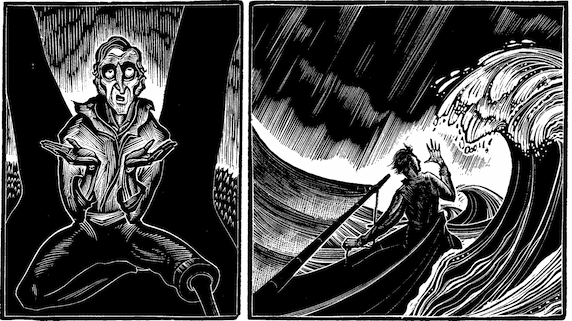
When Mary Shelley penned Frankenstein; or, The Modern Prometheus in 1818, she birthed not only a literary icon but an enduring visual legacy. Frankenstein’s monster has inspired countless artists, filmmakers, and designers for more than two centuries, shaping our collective imagination.
With the highly anticipated 2025 Frankenstein film nearing release, it’s the perfect moment to explore iconic Frankenstein art references—and how the upcoming film incorporates these artistic legacies.
Here are five key visual references from classic Frankenstein art that the 2025 adaptation cleverly incorporates:
🎨 1. Henry Fuseli’s "The Nightmare" (1781)
While predating Shelley’s novel, Fuseli’s chilling painting of a demon perched upon a sleeping woman significantly influenced the gothic aesthetic of Frankenstein. The unsettling atmosphere and themes of horror and dread in Fuseli’s work echo in the new film’s dark visual style, notably during scenes depicting the creature’s tormented solitude.
🖼️ 2. Lynd Ward’s Engravings (1934)

Lynd Ward’s striking wood engravings for the 1934 illustrated edition of Frankenstein visually defined the monster’s melancholy and profound isolation. Ward’s dramatic, shadowy illustrations clearly inspire the stark contrasts and dramatic lighting visible in the 2025 trailer, lending emotional depth to the creature’s portrayal.
⚡ 3. Bernie Wrightson’s Illustrations (1983)

Comic artist Bernie Wrightson created iconic pen-and-ink drawings for a celebrated illustrated edition of Shelley’s novel in 1983. Known for intricate detail and haunting atmosphere, Wrightson’s gothic vision strongly influences the creature’s visual design in the 2025 film, capturing a detailed and emotionally resonant interpretation true to Shelley’s original text.
🎬 4. James Whale’s Frankenstein (1931)

The 2025 film visually nods to James Whale’s iconic 1931 movie, particularly through the dramatic lightning-filled laboratory scene. The famous cry, "It’s alive!" is visually echoed as well, honoring Whale’s original cinematic vision, which helped solidify Frankenstein’s monster as a visual and cultural icon.
🏰 5. Gothic Architecture & Set Design

From the haunting Castle Frankenstein to the atmospheric laboratory, gothic architecture plays a vital role. The 2025 adaptation’s sets echo classic gothic designs, reminiscent of 19th-century gothic illustrations. Vaulted ceilings, shadowy corridors, and dramatic staircases subtly reference historical visual depictions of Shelley’s darkly romantic world. It also takes inspiration from German expressionism.
📽️ How the 2025 Frankenstein Film Elevates Classic Art References

By embracing these rich artistic legacies, the 2025 Frankenstein film promises to deliver a visually stunning experience that deeply honors Mary Shelley’s original vision. It blends historical artwork, classic film imagery, and modern cinematic techniques, showcasing Frankenstein’s monster in a way that resonates across generations.
🎨 Celebrate Frankenstein’s Timeless Appeal
Inspired by the artistic legacy of Frankenstein’s monster? At Public Domain Shop, we celebrate classic storytelling through vintage-inspired apparel and posters. Discover unique pieces inspired by iconic public domain stories like Frankenstein.
Our Frankenstein Collection will be coming soon!


